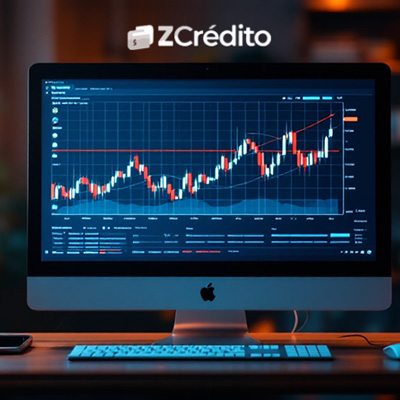What is Inflation and How is it Generated?
What is inflation? If you’re wondering how the rising costs of everyday items affect your wallet, you’re not alone. Inflation is a critical economic concept that influences the purchasing power of consumers and the overall economic stability of a country.
Understanding how inflation is generated, its types, and its effects on the economy is crucial for businesses, policymakers, and consumers alike.
What Is Inflation? 📈

What is inflation? It is the rate at which the general level of prices for goods and services rises, leading to a decrease in the purchasing power of a nation’s currency. It is typically expressed as a percentage and is calculated using various price indices, such as the Consumer Price Index (CPI) and the Producer Price Index (PPI).
When inflation occurs, each unit of currency buys fewer goods and services. This phenomenon affects all aspects of the economy, from the cost of living and doing business to interest rates and economic policies.
How Is Inflation Generated? 💡
Inflation can be generated by several factors, which can generally be categorized into demand-pull inflation, cost-push inflation, and built-in inflation.
1. Demand-Pull Inflation 🚀
Demand-pull inflation occurs when the demand for goods and services exceeds the economy’s capacity to produce them. This imbalance creates upward pressure on prices. Common causes of demand-pull inflation include:
- Increased Consumer Spending: When consumers have more disposable income, demand for goods and services rises.
- Government Spending: Large-scale government projects or increased public spending can boost demand in specific sectors.
- Monetary Policy: When central banks reduce interest rates, borrowing becomes cheaper, encouraging spending and investment.
2. Cost-Push Inflation 📈
Cost-push inflation happens when the costs of production increase, leading businesses to pass these costs onto consumers in the form of higher prices. Factors contributing to cost-push inflation include:
- Rising Wages: If labor costs increase without a corresponding rise in productivity, businesses may raise prices to maintain profit margins.
- Increased Costs of Raw Materials: Price hikes in essential inputs such as oil, metals, and food can lead to higher production costs.
- Supply Chain Disruptions: Events such as natural disasters, geopolitical tensions, or pandemics can create shortages and push prices up.
3. Built-In Inflation 🔄
Built-in inflation, also known as wage-price inflation, occurs when workers expect inflation and demand higher wages to maintain their standard of living. Businesses then increase prices to cover higher wage costs, creating a self-perpetuating cycle of wage and price increases.
Types of Inflation 🧮
1. Creeping Inflation 🐢
Creeping inflation is a mild form of inflation, typically at a rate of 1% to 3% per year. It is generally considered healthy for the economy, as it encourages consumption and investment without eroding purchasing power significantly.
2. Walking Inflation 🚶
Walking inflation occurs when inflation rises between 3% and 10% annually. It is a warning sign that inflation could accelerate, potentially leading to negative economic impacts.
3. Galloping Inflation 🐎
Galloping inflation is a more severe form of inflation, with price increases of 10% or more annually. It can disrupt economic stability, diminish savings, and deter investment.
4. Hyperinflation 🔥
Hyperinflation is an extreme form of inflation, where prices increase by more than 50% per month. It often occurs in countries experiencing political and economic turmoil, leading to a collapse in the value of the currency.
Effects of Inflation on the Economy 🌍
1. Reduced Purchasing Power 💸
As prices rise, consumers are able to buy fewer goods and services with the same amount of money, leading to a decrease in living standards.
2. Impact on Savings 🏦
Inflation erodes the value of money saved over time. If the inflation rate is higher than the interest rate on savings, the real value of savings decreases.
3. Influence on Investments 📊
Inflation can influence investment decisions. While some assets like real estate and stocks may provide a hedge against inflation, fixed-income investments such as bonds may lose value.
4. Uncertainty in Business Planning 🧠
Businesses may struggle to set long-term strategies in an inflationary environment due to unpredictable costs and pricing pressures.
How to Control Inflation 🛠️
1. Monetary Policy 💰
Central banks control inflation through monetary policy, primarily by adjusting interest rates and controlling the money supply. Raising interest rates can reduce spending and borrowing, helping to curb inflation.
2. Fiscal Policy 🏛️
Governments can influence inflation through fiscal policy by reducing public spending and increasing taxes to decrease the money circulating in the economy.
3. Supply-Side Policies ⚙️
Improving productivity and increasing supply can help control cost-push inflation. Policies may include investing in infrastructure, education, and technology to boost economic output.
Stay Ahead of Inflation 💪
Understanding what is inflation and how it is generated is essential for navigating economic changes and making informed financial decisions.
Whether you’re a consumer, business owner, or policymaker, staying informed about inflationary trends can help you safeguard your finances and plan for a stable economic future.
Frequently Asked Questions – What is Inflation (FAQ) ❓
1. What is the ideal inflation rate for an economy?
- The ideal inflation rate is typically around 2% annually, as it indicates moderate growth without significant loss of purchasing power.
2. How is inflation measured?
- Inflation is measured using price indices like the Consumer Price Index (CPI) and the Producer Price Index (PPI).
3. Can inflation ever be good for the economy?
- Yes, moderate inflation can encourage spending and investment, preventing economic stagnation.
4. What is the difference between inflation and deflation?
- Inflation refers to rising prices, while deflation is the decrease in the general price level of goods and services.
5. How does inflation affect interest rates?
- Central banks often raise interest rates to combat high inflation, as higher rates reduce borrowing and spending.